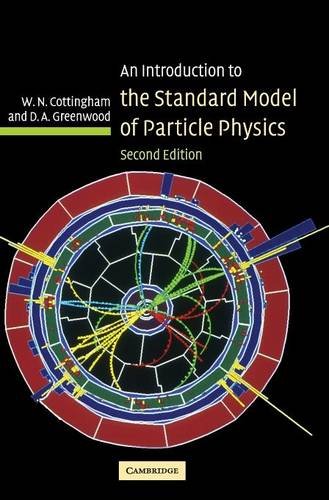An Introduction to the Standard Model of Particle Physics epub
Par hedges daphne le lundi, mai 23 2016, 19:11 - Lien permanent
An Introduction to the Standard Model of Particle Physics by D. A. Greenwood, W. N. Cottingham


An Introduction to the Standard Model of Particle Physics D. A. Greenwood, W. N. Cottingham ebook
Format: pdf
ISBN: 0521852498, 9780521852494
Publisher: Cambridge University Press
Page: 294
Are its properties as expected for the long-sought Higgs boson, the final missing ingredient in the Standard Model of particle physics? The Standard Model of Particle Physics (SM) is the theory that describes, well, everything with the exception of gravity (Yes, this is admittedly a pretty big exception). The first half of the book is a workmanlike introduction to the standard models of particle physics and of cosmology. 1.1 INTRODUCTION Modern particle physics research is based on subatomic particles, including atomic constituents such as electrons, protons, and However, as physicists' knowledge has improved which particles are regarded as fundamental has changed with time. Dark matter could be axions, scalar particles predicted by a small change to the standard model introduced to explain how the strong force respects CP, while the electroweak violates it. Obviously, the Higgs boson's mass is less than infinite. Higgs mechanism aside though, the Standard Model of particle physics needs the Higgs particle. Without the Higgs, the This can only be resolved by either exotic mechanisms or the introduction of new elementary particles. So let's talk mass and why this is still a very good thing for particle physics. The Standard Model of particle physics is a theoretical description of three of the four forces which control our universe (gravity strongly resists treatment within the structure of the Standard Model). For an introduction to the Higgs boson, click here, here, or here (This last one is pretty good). Or is it something more exotic? Modern theory called the standard model, attempts to explain the theory concerning the electromagnetic, weak, and strong nuclear interactions, which mediate the dynamics of the known subatomic particles.
Ramanujan: Twelve Lectures on Subjects Suggested by His Life and Work epub